Similar to sugar, it’s generally recommended that you try to stay away from feeding babies foods with added salt. Here’s how to do that—and stay sane—while feeding baby.
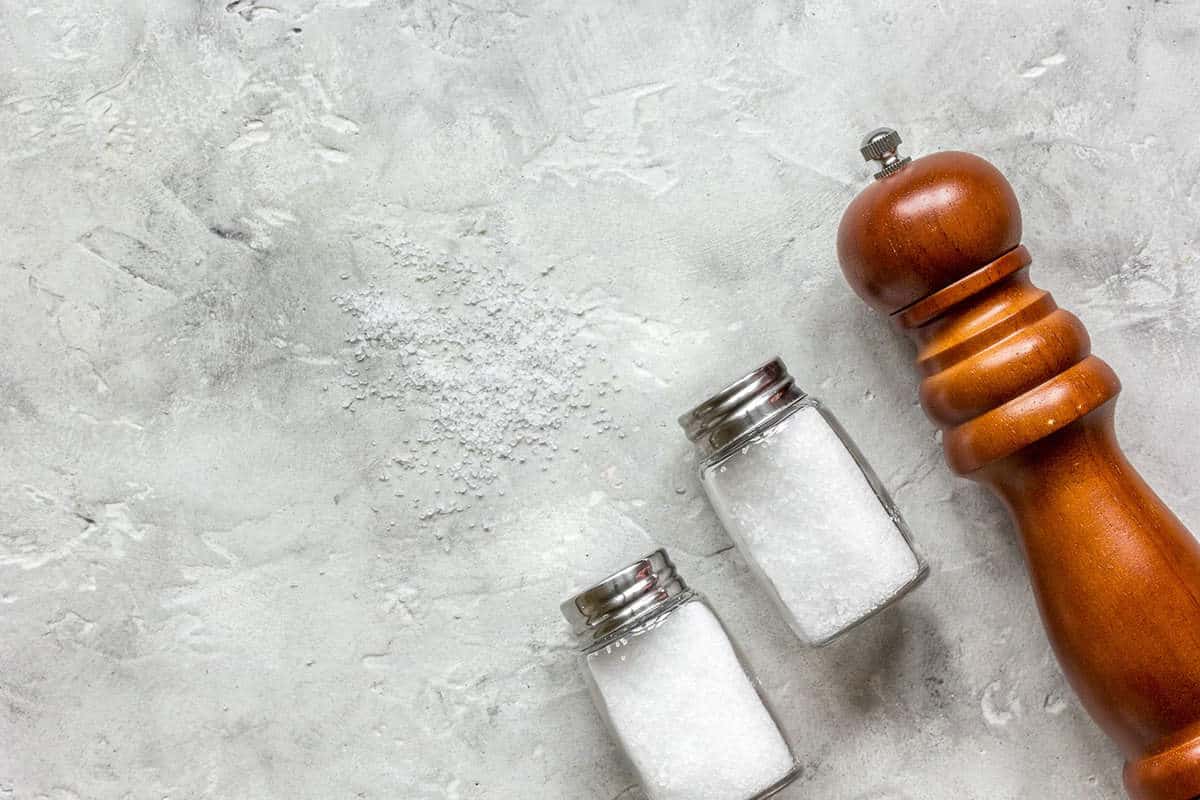
Babies and Salt
It’s true that everyone, including babies and toddlers, need a small amount of sodium in order for their bodies to work properly. But this small amount of salt is really something babies will get from naturally occuring sodium in healthy foods like meat and dairy and even breastmilk.
Table of Contents
Your toddler won’t eat? Help is here!
Sign up for our email updates to get tips and ideas sent to your inbox.
The Deal With Sodium
Added sodium, like the salt you shake into the food you’re cooking or that’s found in packaged foods, should be avoided for babies as much as possible. This is for a few reasons. First of all, beyond the small amount that they’ll get naturally anyway, their bodies really don’t need it and it may even be difficult for baby’s kidneys to properly process too much salt.
Secondly, as babies tastes and preferences are developing, experts advise keeping salty foods to a minimum. It’s thought that this can help reduce a preference for heavily salted foods as the kids grow.
How to Limit Salt (Without Losing Your Mind)
Here’s the truth: Some babies are going to get some salt, and it will be OK. There are even some healthy foods like meats, eggs, and dairy products that naturally contain sodium. The key is try your best to keep the added salts to a minimum.
The first part of this is to avoid using salt to add flavor to baby’s foods. If you’re cooking a family meal, leave out any added salt that’s called for throughout the recipe. Once everything is cooked, take a portion out for the baby and then you can add some salt to the remaining portions for yourself.
You can also consider using salt-free seasoning options like dried herbs, spices, and citrus zest to season foods for the whole family.
Another major source of added salt, though, is packaged foods. For most families, it’s not realistic to completely avoid packaged foods. However, especially when your baby is first starting solids, the more you can cook or bake at home the better—or go with easy no-cook baby foods.
When you do choose to incorporate packaged options that have added sodium, just make sure you’re keeping the serving size small and offering it as part of a well-rounded diet that includes lots of whole foods as well.
TIP: Most baby specific foods are made without added salt. Check the ingredients on the nutrition label to be sure.
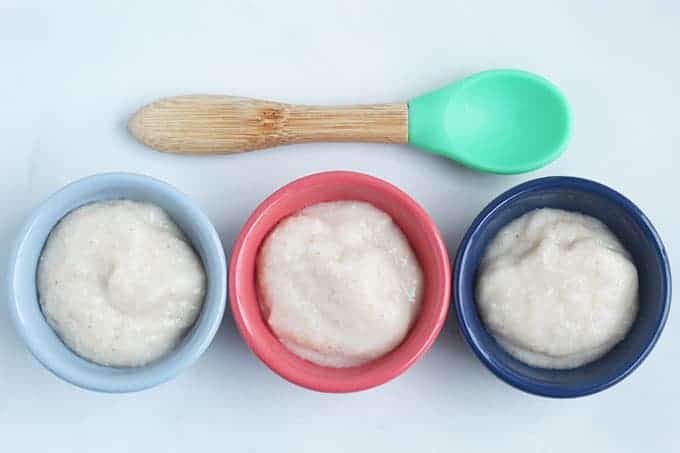
Frequently Asked Questions
It can be hard for baby’s kidneys to process higher levels of salt, and eating very salty foods early in life may impact their preferences down the line.
Babies will naturally get a little bit of sodium. However, adding salt to their food and serving a lot of packaged foods with high levels of added sodium is not recommended.
You definitely don’t need to panic! The point of the recommendation to avoid added salt for babies is to keep them from eating too much of it on a regular basis, which could have an effect on their kidneys or impact their food preferences.
If you accidentally feed your baby a portion of food that has been salted or they take a bite of a French fry, it will all be okay.
The majority of food made specifically for baby does not have added sodium, including Clearly Crafted baby food pouches and baby puffs. Check each label for the ingredients (there may be a small amount of sodium that naturally occurs in the ingredients, but “salt” should not be on the ingredient list).
Our Master List of Baby Snacks may help too.
Toddlers and Salt
The same general advice applies to toddlers and salt of keeping it to a minimum, but they can have some since their kidney’s are more developed than a babies.
The American Academy of Pediatrics recommends using small amounts of salt to help food taste good, but to not go overboard. And remember: “Almost 80% of the sodium in our diets comes from processed foods like bread, soups, salty snacks, fast foods, canned foods, or processed meats,” as the AAP says, so look for “low-sodium” options when possible.
The main way we relax about tracking salt is to think of what we feed our families in terms of proportions. Aim for more fresh, whole foods and fewer packaged ones. That doesn’t mean you can’t do any packaged foods, just have a general goal of aiming for less.
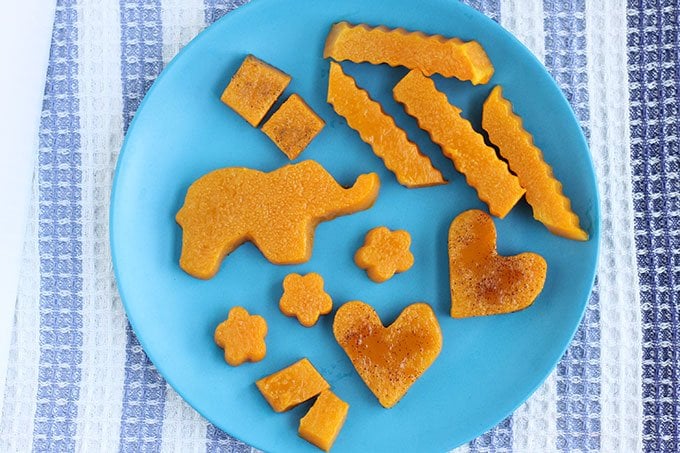
Easy Ways to Add Flavor to Food without Salt
These are a few of our favorite ways to boost flavor in food without adding extra salt. (Some of these have naturally occurring sodium.)
- fresh herbs
- spices (not spicy hot, but spices like cinnamon, cumin, Chinese Five spice, salt-free pizza seasoning, etc.)
- citrus
- tomato paste
- roasting vegetables in olive oil brings out their natural sweetness
- nut and seed butters (look for salt-free options)
- Parmesan (modest amounts since it does have sodium)
- shredded cheese (modest amounts since it does have sodium)
- plain whole milk yogurt
- toasted sesame seeds
TIP: You can find our favorite Dips and Sauces for Kids for more ideas.
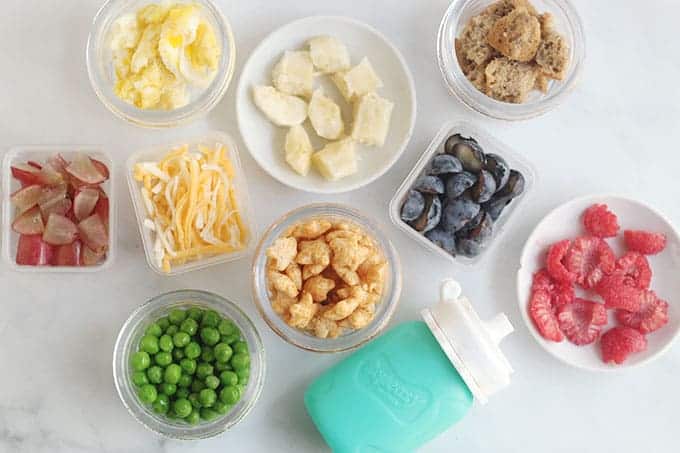
Best Tips for Salt and Babies
- You should avoid feeding your baby added salts, whether that’s in the form of salt used to season foods or from packaged goods.
- Too much salt can be difficult for your baby’s developing kidneys to process correctly.
- Some experts worry that feeding baby foods high in sodium early in life may lead to a preference for salty foods as they grow.
- You can easily limit added salt by simply salting your recipes after you put aside a portion for the baby—or using herbs, spices, and citrus to season foods instead.
- Snacks specifically made for babies and toddlers usually have lower added salt than regular foods, but you’ll need to check the label.
- The best way to avoid added salt in packaged foods is to cook and bake most of your food at home. However, when this isn’t possible, consider proportion and aim for more of the food we serve to be whole, homemade foods and less packaged foods. (Some of both are totally fine!)
Related Posts
Need ideas for salt-free recipes for babies? We’ve got you covered with our huge selection of delicious and healthy baby recipes.
This post was first published on March 25, 2021.
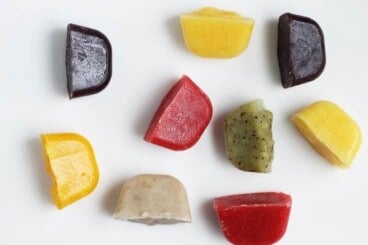
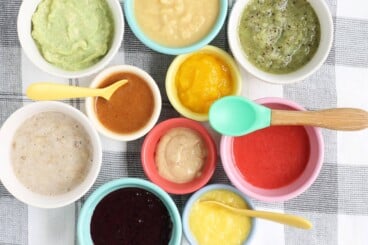
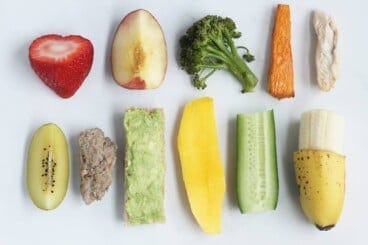
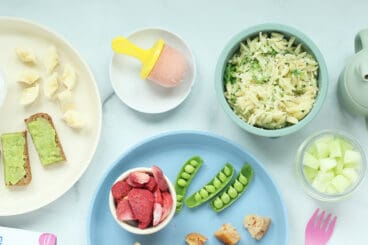



















All comments are subject to our Terms of Use.